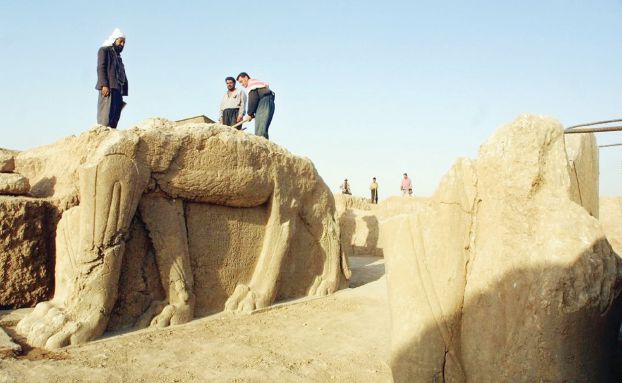Let them steal our artifacts, we do not deserve them
Abdulrahman al-Rashed/Al Arabiya
Tuesday, 10 March 2015
What the Islamic State of Iraq and Syria (ISIS) has done in Iraq shows that we do not deserve the historical treasures that fill our museums and are buried beneath our sands. We live on top of great heritage, and fail to understand its value to ourselves and the rest of the world. This is why monuments were destroyed as if they were mere obsolete toys. In order to protect the artifacts of our ancient grandparents and those who built civilizations, we must lend them to those who know their value and can maintain them until the day comes when we mature and can bear this historical responsibility. Only then do we have the right to ask for them back. We have a long history of ignorance regarding the importance and preservation of monuments and historic treasures.
Neither ancient nor modern history have witnessed such barbarism and destruction as what ISIS recently did in Babylon, Nimrud and Mosul’s museum. It joyfully destroyed monuments that were more than 3,000 years old. Extremists previously destroyed such monuments in Syria, while Al-Qaeda did so in Afghanistan. The same applies to extremists in Libya.
ISIS’s destruction
This is in addition to ISIS’s destruction in stable countries under the pretext that it is fighting polytheism and its manifestations. In light of these crimes, we should reconsider our rights to historical monuments and artifacts, and admit that we do not deserve them. What happened in Iraq is not a fleeting crisis. It is a deep-rooted issue that exposes us. Instead of blaming the few extremists, we must admit that we are an underdeveloped nation that lives in an era of darkness and decadence due to the presence of ISIS, Al-Qaeda and similar groups that impose their will on those around them. Therefore, we cannot say we have any rights to historical artifacts. The duty is to smuggle them to where they can be preserved, looked after and studied at the world’s prominent museums.
Ignorance
We have a long history of ignorance regarding the importance and preservation of monuments and historic treasures. Earlier this year, an Egyptian museum admitted that Tutankhamen’s chin, one of the greatest artifacts, was broken off during an ordinary cleaning job. Late Iraqi President Saddam Hussein displayed statues of himself among Nebuchadnezzar’s.
Late Egyptian President Gamal Abdel Nasser almost buried a whole city of relics when he decided to build the Aswan dam, and would have succeeded had foreign countries not worked to get the relics to safety. In the Arabian peninsula, many archaeological sites and murals were destroyed because people thought they were prohibited drawings.
Fortunately for us, Western scientists and traders transferred and smuggled relics from Egypt, Iraq, Yemen and other countries. They are now preserved in the museums of France, Britain, Germany, Italy, Turkey and other countries. Although many demand the return of what was transferred and stolen, some of us know that transferring these relics to these countries was a good move because we do not deserve them.
We have not yet reached a mature phase of awareness regarding the importance of relics. We lack the ability to preserve them, and the developed scientific means to maintain, look after and study them. Imagine if Muslim extremists come to possess great treasures such as the statue of Nefertiti, which was smuggled to Germany at the beginning of the last century, or the statue of Queen Hatshepsut, or the head of Djedefre, or the towering obelisks, or the rest of the 5,000 Egyptians relics. Imagine if Babylonian relics, which narrate Iraqi history and are currently on show in Britain, had stayed in Iraq. We all know they would have ended up just like the monuments that ISIS jubilantly destroyed.
Fortunately for us, some four million Arabic and Islamic manuscripts are stored in Western museums and universities. Otherwise, they would have been destroyed by the madmen of ISIS, or eaten by the mice that run rampant in abandoned storehouses in Arab museums.





















